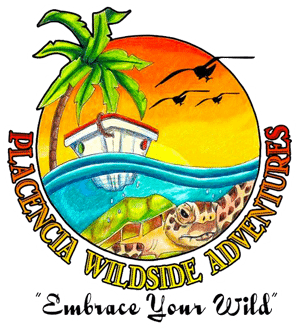|
Welcome to the best little zoo in the world! Why Bring Your Family to the Zoo? Unless you're prepared to spend days at a time in the jungle, a trip to the zoo is the best way to see and experience indigenous animals of Belize, you'd normally never get to see. The Belize Zoo has on display over 175 animals (mammals, reptiles, and birds), many of whom have been rescued. ABOUT THE ZOO The Belize Zoo was started in 1983, as a last ditch effort to provide a home for a collection of wild animals which had been used in making documentary films about tropical forests. Shortly after the backyard "zoo" began, it was quickly realized that its Belizean visitors were unfamiliar with the different species of wildlife which shared their country. This very aspect fomented the commitment to develop the little zoo into a dynamic wildlife education center. Today, The Belize Zoo and Tropical Education Center exhibits over 175 animals, representing over 45 native species. The Zoo keeps animals which were orphaned, rescued, born at the zoo, rehabilitated animals, or sent to The Belize Zoo as donations from other zoological institutions. The Belize Zoo has become the first nature destination in Belize that is fully accessible to visitors with physical disabilities. It is a non-governmental, non-profit organization focused on wildlife conservation through wildlife rehabilitation and environmental education. 52 Belizeans are currently employed at TBZ. A visit to the Zoo is the best way to get an introduction to the animals of Belize, and to understand why it is important to protect the habitats that sustain them. We hope this website will be the next best thing to visiting us in person. The Belize Zoo and Tropical Education Center believes that by bringing the people of Belize closer to the animals which are their natural heritage, they will feel proud of these special resources, and want to protect them for future generations. The Belize Zoo and Tropical Education Center receives over 86,000 visitors annually, 13,000 being Belizean students, parents and teachers, as part of the progressive education programs, and popular zoo events including: National Tapir Day; birthday celebrations for Junior Buddy the Jaguar and Panama the Harpy Eagle; summer camps; teacher and tour guide workshops; and Student Career Training. MAMMAL EXHIBITS Mammals of Belize - What makes a mammal? There are over 40,000 mammals on planet Earth, some live on land and others in water, but they all share certain characteristics. Mammals are a group of animals with vertebrae or backbone, and their bodies are covered with hair. Mammals also produce milk which allows them to nurse their young and spend a lot of time with them as they are growing up. Mammals are endothermic or warm-blooded, which means that they can regulate their own body temperature. This is the group of animals which humans belong to. Belize has approximately 145 species of mammals living within its boundaries. Mammals exist within all the different habitats of Belize, from the manatee and dolphins of the coastal zone, to the 5 different species of wildcats which live deep within our lush broadleaf forests. The wild mammals of Belize tend to be very secretive and mostly nocturnal. This makes them extremely difficult to see. They usually see, hear, or smell you long before you know they are near by. Forest dwelling mammals do not stand out in the open for easy viewing, but instead climb through the canopy or scurry over the forest floor well ahead of you. That is one reason the Belize Zoo is such a special place. Here you can see many of the mammals found in Belize's forests. A visit to The Zoo is the best way to get an introduction to the mammals of Belize, and to understand why it is important to protect the habitats that sustain them. Here at the Zoo you get a chance to get up close and personal with Belize's National Animal, the Central American Tapir. As you walk around the Zoo you will see spider monkeys, white-tailed deer, coatimundis, white-lipped peccaries, and Belize's five wildcat species. You can even give a jaguar a "high five" by doing a Jaguar Encounter. BIRDS EXHIBITS The Birds of Belize - What makes a bird? Birds are a group of winged, two-legged animals that also have a backbone just like mammals. They are warm blooded like mammals, but do not have hair on their bodies; instead they have feathers. All birds lay eggs and most of them incubate the eggs with their warm, fluffy bodies. Belize supports over 580 species of birds. This includes both resident and migratory species. Birds thrive in all of Belize's habitats. Wading birds congregate along the coastline and inner lagoons. The grasslands and savannas provide seeds for the many finches, and hunting grounds for keen-eyed soaring raptors. Tall emergent trees provide nesting sites for giant birds such as the Harpy Eagle and Jabiru Stork. In our tropical forests there is an astonishing diversity of birds, such as parrots, toucans, mot mots and others. Watching birds in the tropical forests of Belize can be difficult at times, but extremely rewarding for birders. The thick vegetation, and the typical behavior of quick, seemingly random movements of many forest birds, make them often difficult to see. Many birds also live in the upper canopy of the forest, making it a strain to be constantly looking upward. Often times we hear but do not get to see them. However, early morning and late afternoon are excellent times to bird watch, as most bird species are feeding or moving to new locations during these times. The Belize Zoo has always had a strong collection of bird species, from parrots such as scarlet macaws, to vultures and hawks, and wading birds, including the iconic Jabiru Stork. A part from birds in enclosures the habitat around the zoo supports a variety of wild birds, that come and go when they chose to. For another up close experience you can do a Toucan Encounter with "Runt" our ambassador Keel-billed toucan. REPTILE & AMPHIBIAN EXHIBITS Reptiles and Amphibians of Belize The exact number of reptiles and amphibians is unknown as it is often difficult to study these two groups due to their habitats. To date there is approximately 139 species of reptiles and amphibians recorded in Belize, with 62 of those being snakes. What makes a reptile? Reptiles are back-boned animals covered with scales. They lay shelled eggs similar to birds, or keep the eggs inside their bodies till they hatch. Reptiles are grouped into turtles, crocodiles, snakes and lizards. What makes an amphibian? Amphibians are back-boned animals that have smooth, thin skin and require water to keep their bodies moist. They can be found under rocks, alongside streams, in swamps and marshes; places which are not the most comfortable for humans. This group includes salamanders and frogs. Reptiles, unlike amphibians, are not restricted to wet habitats because they have scales. Snakes and lizards can be found in any habitat, from the soil and leaf litter of the forest floor, to the upper canopy of the rainforest, and the mangrove forests of the coastline and Cayes of Belize. The Belize Zoo supports a small display of the more common snakes of Belize including the infamous Fer- de -lance. Humans tend to have a strong fear of snakes, although venomous snakes are not frequently sighted, as they are mostly nocturnal, and will only attack a human if threatened. The Zoo includes the non-venomous Boa Constrictor in its many environmental education programs in order to teach persons the importance of snakes. We focus on the positive aspects of snakes. Snakes help to keep the population of more prolific creatures which are harmful to humans balanced, such as rats, mice, and insects of the tropics. A visit to the Zoo might give you a chance to meet "Balboa" our friendly boa constrictor. The Zoo is also home to two species of crocodiles; the Morelet's and American crocodile. "Rose" the American Crocodile is an ambassador for her species as she also accompanies "Balboa" on educational programs to educate children and adults about their importance.  Director's VIP Tour Come on a unique adventure with TBZ's Founding Director and Award-winning Environmentalist, Sharon Matola! On this special Belize Zoo journey, Sharon will take you for personal encounters with our charismatic animal ambassadors. Some of these encounters include: • Junior Buddy the Jaguar. Here you get a full introduction on Jr Buddy’s background and interact with him in an encounter available nowhere else in the world! • Runt the Keel-billed Toucan. Here you will get to feed and take photos with a charming representative of Belize's National Bird! What "Runt" lacks in size, he makes up for in personality! • Indy the Tapir. One cannot visit the Belize Zoo without meeting the magnificent "mountain cow," our national animal. Indy the tapir will trundle right over for a "meet and greet," and accept treats from his new friends! • Panama the Harpy Eagle. On your tour with Sharon, you will get to meet "Panama," our harpy eagle! The harpy is one of the largest and most powerful eagles in the world, and Panama is their famous "ambassador" here at the Zoo. Learn about the success of the Belize Harpy Eagle Restoration Program, while being in the presence of this regal raptor. Take photos, ask questions, make memories! The Director's VIP Tour is an unforgettable experience, and great for everyone: couples, groups, families, and "lone wolves" are welcome! Note: Tours take a minimum of 2 hours, and includes a signed copy of one of Sharon's books. The call of our Macaws At The Belize Zoo, the scarlet macaw exhibit is a proven “must see” for all visitors. The bright beauty of a scarlet macaw is unmatched in the parrot world. Next to their exhibit is, unfortunately, a sad recount of environmental misbehavior which has led to a steady decrease of scarlet macaws in Belize. Studies in the past few years have indicated that the birds which remain face a gloomy future. Recently, someone pointed out, “But the birds are still there”. As the person in Belize who studied the population of scarlet macaws in the Upper Macal River valley for a period of five years , which also involved many meetings and discussions with other biologists, it seems timely to put into writing our current scarlet macaw scenario. A small and struggling population of scarlet macaws is still trying to keep the Chalillo dam area as a home. This population has decreased from the “dam” changes. What did people think the remaining birds would do? Fly into trees and commit macaw-suicide because their traditional home area, where they have bred and foraged for hundreds of years, was systematically altered and mangled? Research has repeatedly shown that a macaw will return to a nesting site, even though it is sub-standard, and attempt to use it as the “chosen place” for their reproduction attempts. Occurring now is that a decreased population of these rare birds has become geographically isolated and, in addition, is faced with poaching and further habitat loss. Scientific-based warnings about this very probable parrot-situation, one which would likely lead to local extirpation, were aired and spoken about during the Chalillo dam debate. Few cared to listen. Saving the scarlet macaw for a future in the wild will take a complex toolbox of conservation strategies, and much, much more than simply “monitoring the remaining population.” Serious captive-breeding for re-introduction in protected and strongly guarded areas is a good start. But a difficult one, and sadly, unless the difficult route is chosen, the forthcoming generations of Belizeans will only know a scarlet macaw from a zoo visit. Rather than see the jewel tarnished, our nation needs to provide a strong semblance of pride and protection for our important natural resources. EDUCATION DEPARTMENT Education Department Established in 1986 The Belize Zoo's Education Department is commitment to achieving the following goals:
TEACHER'S WORKSHOPS  After 4 Environmental Education Manuals were developed collaboratively by the Belize Ministry of Education, The Belize Zoo and Peace Corps Belize 1990-1994, there remained the dire need for the teachers to effectively interpret and transfer the information contained in each of the four resource Environmental Education Books. Recognizing this need, the Belize Zoo initiated regular teachers' summer workshops to assist teachers in the interpretation of contents of the manuals and to demonstrate how they could be integrated into their existing curriculum. The department has held very successful Teachers' Enrichment Worshops, for which there has been the participation of teachers country wide. What started as a "Teachers Workshop" in 1992 has now been modified and changed to "Teachers Study Tour" in 1998 where by teachers are taken out of the lecture room setting and into a more hands-on learning experience complimented with several field trips. These study tours were design to assist teachers in integrating conservation sciences into their classroom area. Group project discussions, field trips and slide presentations were all in the package for these programs with the objective that teachers return to the class room with more strategies and ideas for teaching. Each year our department recognizes the growing importance/impacts these study tour have from feed-back and evaluations made after the event. SCHOOL VISITS More than 12,000 students, parents & teachers from all over Belize visit the Zoo each year. 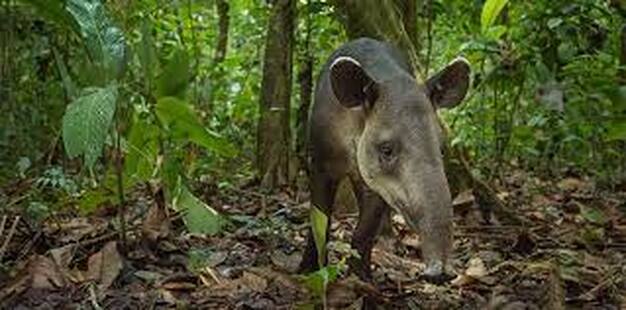 Booking a school trip to the Zoo: The Belize Zoo can accommodate a maximum of 4 schools daily. Teachers and Principals are asked to contact the Zoo beforehand to book their trip date, in order to avoid overcrowding and to ensure a more relaxed and enjoyable tour for all involved. The Zoo's Education Department offers a warm welcome and introductory discussion to visiting schools groups before they venture into the Zoo. Our discussions vary depending on the age/class levels:
When possible, the introductions are followed by an interactive session with "Balboa," our resident Boa Constrictor. School Zoo Tours - Self GuidedSchool groups are provided with brochures containing a comprehensive map of the Zoo to explore at their leisure. All exhibits have interpretive signage to help enhance learning while conducting your Zoo tour. Parents and teachers are expected to supervise their students at all times to ensure safety of both visitors and wildlife in the Zoo. For guided tours, kindly inquire at the Front Desk INTERNSHIP OPPORTUNITIES Belize Zoo Tropical Education Center  The Belize Zoo (TBZ) and Tropical Education Center (TEC) is a private, non-profit organization whose main mission is the conservation of the native fauna and ecosystems of Belize. Both the TEC and The Belize Zoo function as one unit promoting active stewardship of natural resources through environmental education and wildlife rehabilitation. As a growing organization we welcome the help and knowledge of interns who are willing to whole heartedly devote their time and knowledge towards safeguarding, promoting and enforcing our main mission. The Animal Management and Education Departments of The Belize Zoo extend a call to interested persons to volunteer as interns through The Belize Zoo Internship Program. Main Goal Of The Internship Program:To offer interns first hand experience working with ongoing programs at TBZ in the Animal Management and Education Departments. Specific Objectives: Interns will be expected to:
• Participate in organizing special zoo events, such as animal birthday parties • Accompany education department on outreach education visits to local communities • Assist in weekly reading program at a primary school split between two communities very near the Zoo. This is an important new initiative we have started as part of a larger program to address “children at risk” social factors in these communities. • Conduct observational studies of animal behaviour on-site at the Zoo. This practice gathers important information that is used by both Animal Management and Education. How To Apply: Interested person should submit a letter of inquiry stating:
Interns will be responsible for:
Duration of Internship: TBZ Internship Program is designed for a minimum of two weeks and a maximum of four weeks. NATIONAL TAPIR DAY April 27th  No other animal was so celebrated as April the Tapir. Each year, sometime during the month of April, one day is set aside to celebrate the tapir. Visitors and school children got to witness a rare spectacle as April feasted on her special meal, made of horse chow, honey, watermelon and carrots, garnished with brilliant hibiscus flowers, while the children sing the Mountain Cow Song. The first poster ever developed by Zoo staff in the 1980's depicted a tapir looking lovingly at her calf. This animal that now enjoys a healthy population in our country, once also existed in other parts of Central America, unfortunately not anymore. Is it any wonder then, why April was the Zoo's celebrity. She has been the most singular factor in driving the message of "Conservation" home. April the tapir, who was the oldest living female tapir in captivity, died peacefully in her sleep on November 1st 2013. And while all at the zoo mourn her loss, we are focusing our attention on celebrating her life and what she meant to Belize, and to many people living outside our borders. April arrived to the original zoo, one mile from the present location, in April 1983. A hunter found her lying in the Sibun river, unable to move. He brought her to the little beginning zoo. The small backyard menagerie was just three months old, and so was the young mountain cow. Christened “April” by the self-appointed zoo director, Sharon Matola, a hard task was at hand. “April” was in critical condition due to being heavily infested by the notorious screw worm parasite. Now eradicated from Belize, screw worm was known to kill species of wildlife as well as livestock. “April” was yet another victim. Intensive tender-loving care was provided. Sharon and “April” became roommates. Receiving medication and nourishing banana milkshakes infused with vitamins, the baby tapir slowly progressed and improved. She would live! Word got out that a young tapir was at the little zoo. People would wander in to see her. Back then, what made an impression on “April’s” adopted mom, Sharon, was the lack of understanding which prevailed about the National Animal of Belize. Constantly, she would hear people say that tapirs were dangerous animals. “They can skin you alive with their flexible nose”. Sharon and “April” began working together to change the misunderstandings about these special, gentle, plant-eating mammals. Our National Animal! Sharon was committed to turning “April” into a star ambassador for her species, which is an Endangered species, too. Her first birthday party happened when she was two years old. Six children attended. Every year, this effort continued, and every year the party got bigger, and bigger….posters were created applauding our National Animal. School children began visiting more regularly, “April” became a major attraction at the zoo. A mountain cow you can pet! And feeding “April” bananas was so very exciting to countless kids. Years passed, her popularity grew. And when “April” turned sweet sixteen, her birthday party was covered on CNN news! She met royalty and movie stars, and she herself starred in documentary wildlife films produced by Richard and Carol Foster. She was famous both in Belize and beyond our borders. Today in Belize, people no longer attach false myths to our country’s tapirs. These rare animals are viewed as beloved Belizeans. The important role they play in maintaining healthy forest ecosystems, is understood throughout the nation. One animal, “April” the tapir, provided the springboard for a vital environmental awareness. In 2012, The Belize Zoo received approval from the office of the Prime Minister to have National Tapir Day recognized and celebrated every April 27th. The seven tapirs still living at the Zoo will continue to see that the messages April brought into light thirty years ago, will continue on with zest. We will miss you, April. Thank you for all you did on behalf of one of the most special animals on earth: the Central American Tapir, our "Mountain Cow."
1 Comment
|
Is located on the island of Ambergris Caye, directly across from the Belize Barrier Reef, off the mainland coast of Belize. The property is nestled in a cluster of Australian Pine trees, backed to a littoral jungle, and surrounded by tropical gardens. It's about a one minute walk from the property to the beach, and a 10-15 minute drive from the island airstrip to the property.
We offer one bedroom suites (455 s.f.) of living area to include: livingroom, kitchenette, private bathroom and bedroom. We are also about a one minute walk from one of the best restaurants on the island serving (breakfast, lunch & dinner). Within walking distance you can find: (3) blocks is Robyn's BBQ (4) blocks is 2 fruit stands (5) blocks local grocery store IF YOU'RE COMING TO BELIZE TO............... If you're coming to Belize to dive the Blue Hole, descend the shelf walls at Turneffe, snorkel the Barrier Reef, explore Mayan ruins, rappel into a cave, kayak along the river through caves, zip line through jungle tree tops, hike through a cave to see an ancient human skeleton, swim with sharks, listen to Howler Monkey's, hold a boa constrictor, feed a jaguar, horseback ride through the jungle, canoe through a cave, rappel down a waterfall, sail around an island, enjoy cocktails & dinner to a sunset, climb 130' feet to the top of a Mayan ruin, rip up the jungle trails on an ATV, float through a series of caves on a tube, and sip on a rum punch..... then this is the place for you. Belize Budget Suites, offers you clean, affordable, attractive, accommodations, at prices that allow you to do all the things just mentioned. Archives
February 2021
Categories
All

For All Your Home Improvement Needs

For all Your Real Estate Needs
501-226-4400 10 Coconut Dr. San Pedro, Belize Your Ad Could Go Here
|











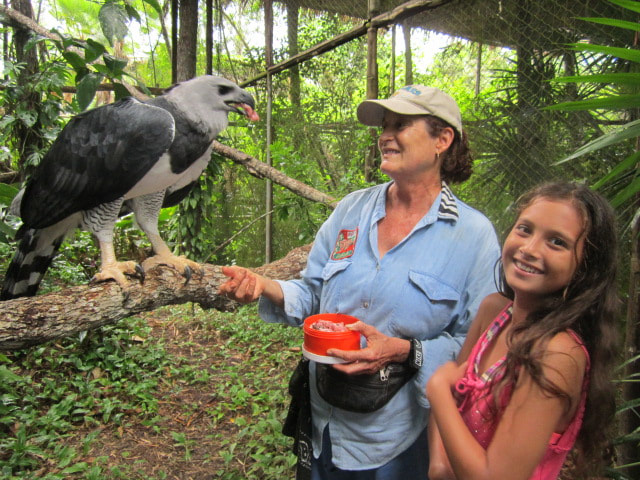





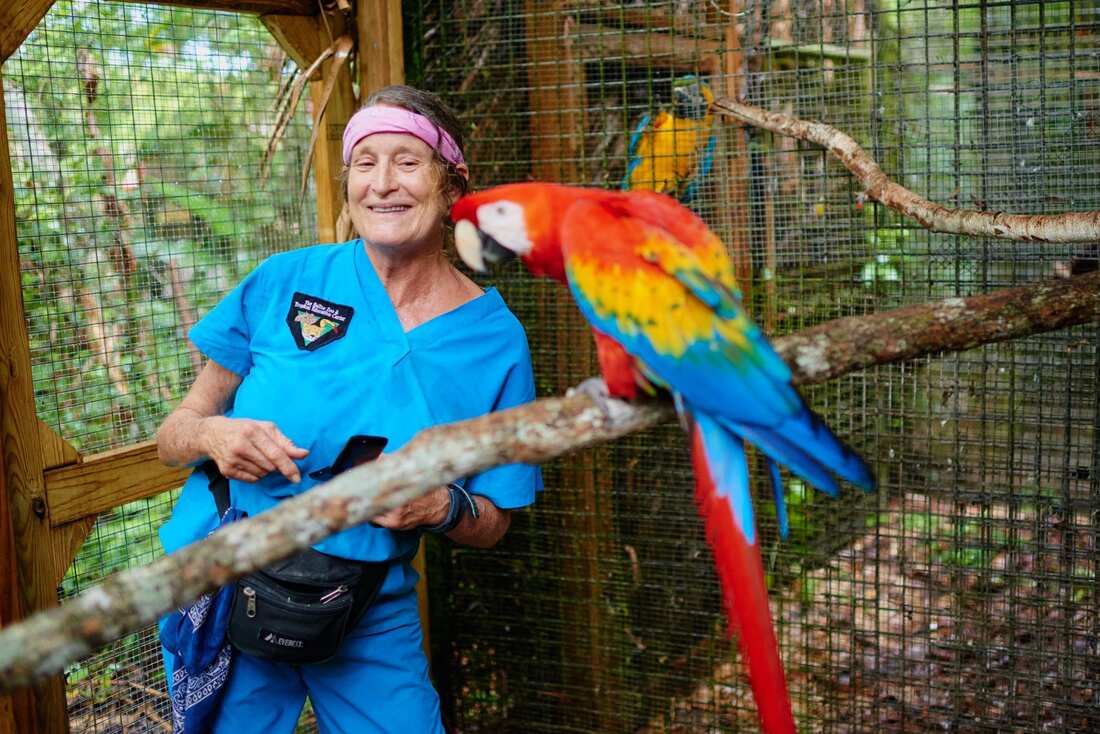
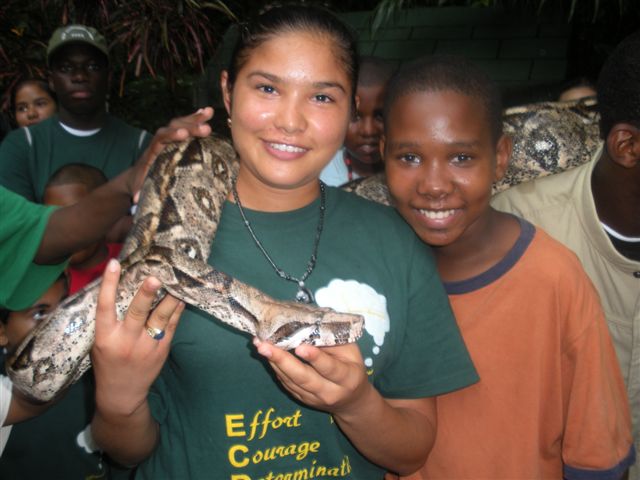
























 RSS Feed
RSS Feed












